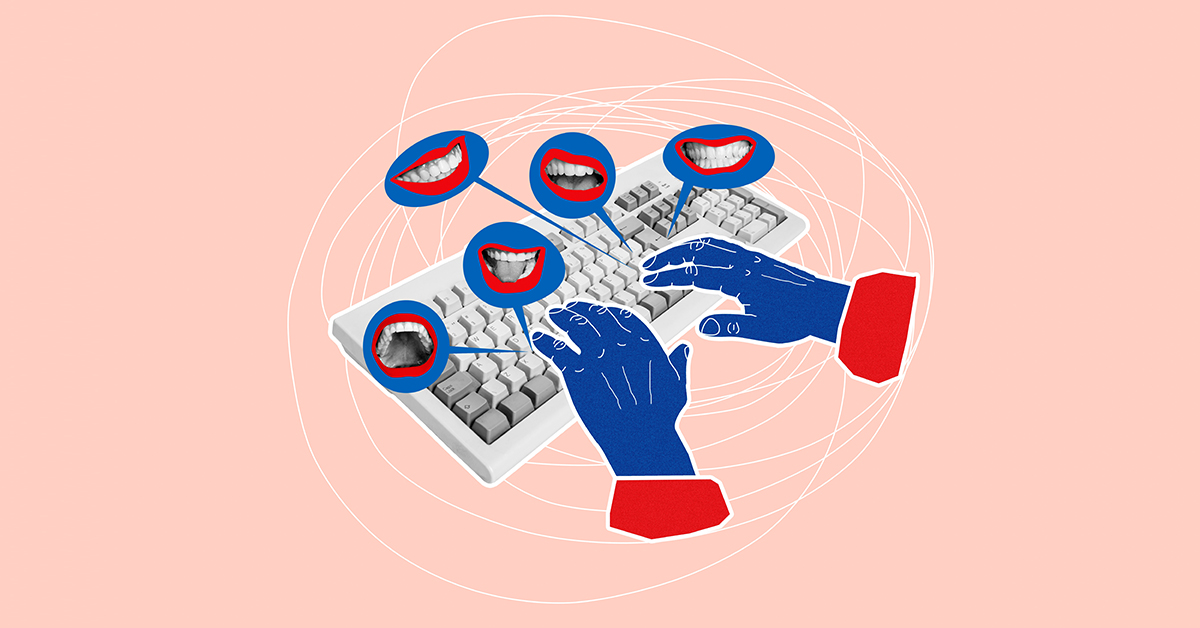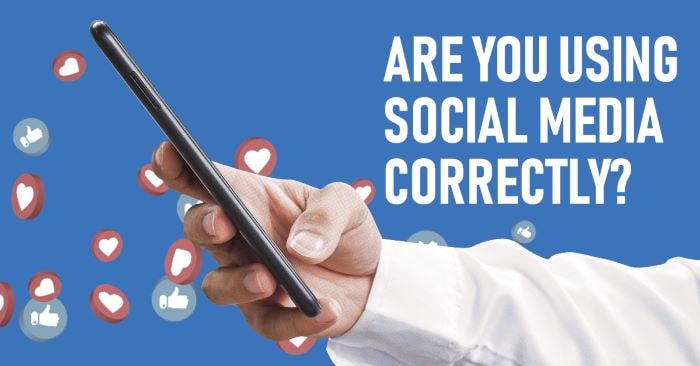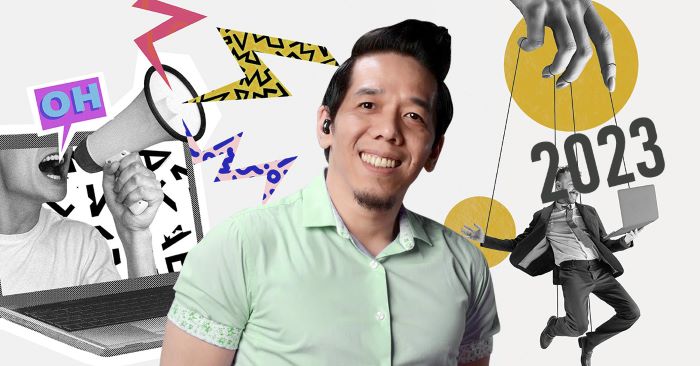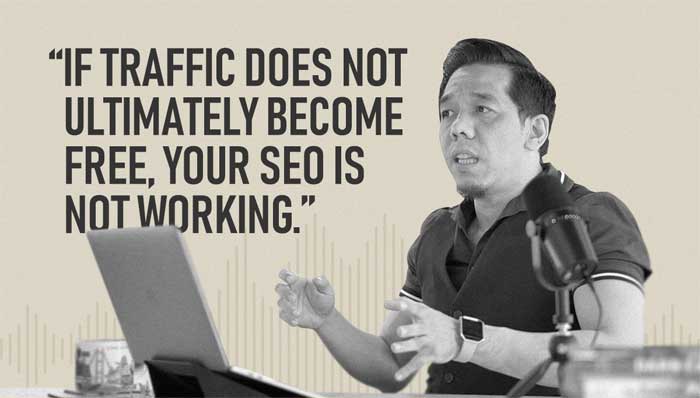Truelogic Episode 84 Recap: Social Media Crisis Management 101

Podcast Transcription
Ant Sierra: You are listening to another episode of the Truelogic DX podcast. Now to properly quote Aunt May from the Spider-Man series, “With great power comes great responsibility.” And in business, we must be prepared for the unexpected, which includes a social media crisis. I am Ant from Truelogic’s social media team by the way. Now joining me are my teammates.
Now a social media crisis doesn’t have to mean the end of your brand’s reputation online because you are expected to be equipped to address these situations. So regardless of whatever type of business you have, or the size of business you have, it’s always beneficial to have a crisis management plan on hand.
In this episode of the podcast, we will be discussing all of the effects of a social media crisis and the actions you can take to effectively prevent and handle these scenarios. So first and foremost, what is a social media crisis?
To put it in a simpler perspective, these are social media activities that are a little bit destructive, and unexpected. It can hurt. It is designed to hurt an organization’s reputation. It could be one of many things, a lot of people can tend to mistaken as, tend to mistake or overlook, like unhappy customers, bad reviews, or cyberbullying in the comment section.
Now, crises like these can spread quickly in a very, how should I say this, interactive platform, like social media, and cause big and lasting damage to your brand. Now, to handle this, you must act quickly and communicate well to deal with these specific scenarios. However, not everything bad on social media can be considered a crisis. Negative feedback, small errors, routine issues, rumors, and unrelated events, are not crises. Not every negative mentioned is a social media crisis.
A crisis is a serious problem, like what we’ve said, that can harm an organization’s reputation, which includes finances, legal standing, lasting relationship with its audience. So what constitutes, Jake, Eka, what constitutes as a social media crisis?
Understanding and Managing Social Media Crisis
Jake Macapagal: Now and then you get negative reviews in the comments section. So that’s fine, that’s normal. Because you can’t please everybody. However, those negative comments… they can be the start of a social media crisis if you try to analyze it. For example, you notice a lot of people say, for example, I’m selling cars. The name of my car, let’s say blue. And then people are often saying, oh, the radiator is always broken.
And once you notice that there’s a trend like that, that can develop into a social media crisis, which you should always be on top of, which is why monitoring social media is important. So I guess to answer what a social media crisis is, it’s when a significant amount of people or audiences share negative comments about your brand. In a way, they are persuading us not to buy this.
They’re advocating for people not to purchase or not to support said brand. So that’s how I’d like to coin, the social media crisis. So if we try to label it into different parts, there are four different phases of a social media crisis. So first off is the number of people who share said negative comments. Like sumusobra na ba siya dun sa typical na nakuha mo per month, per week.
Like, if pansin mo na, uy, this is more than what we usually get, that’s when you should start preparing for the worst. Kasi, there’s this quote that I used to live by, na when you prepare for the worst, tapos na-encounter mo siya, you’re prepared. If it doesn’t happen, then good. You don’t have anything to worry about. So dun pa lang dapat nagpe-prepare ka na.
Ant Sierra: Parang ano, at a certain volume, kailangan ayos siya, I mean to step in before it does further damage, to my brand.
Jake Macapagal: Exactly. So parang in a way, you can harness yung medyo pagiging paranoid mo dun to, just to protect your brand. So the next is yung timing naman. So yung mga comments na to, how often do you get them? Parang in a span of a few hours, sobrang dami bang nagco-comment? Or parang, in a few days, sobrang laki ba ng spike. And Eka, what do you think about sa timing naman? Did you get any input on this one?
Erika Agustin: So for this one, you really have to time the situation because especially whenever there’s an event or something like, maybe may event na very important and super sensitive yung mga tao right now. So like, for example, may mga nangyayari sa ibang bansa o dito mismo sa Philippines. So kailangan maging sensitive din tayo sa kung kailan tayo magpo-post and kung kailan yung tamang time and if yun ba talaga yung tamang time na mag-post and kung huwag na muna. Like, i-on-hold na muna siya.
Jake Macapagal: Yeah, totally agree with that one. So timing, I guess, yung timing nung response mo saka yung timing nung, like yung spacing between yung negative comments that you receive. It plays a key role in this one.
Ant Sierra: At saka even before, for example, instead of answering this in a, more of as a response na crisis management response, more of parang mas na-co-consider dapat na, alam mo yun, think before you post. Yung mga ganung thing. Kasi timing and engagement activities, we can avoid these types of scenarios, especially when, alam mo yun, we are, again, this leads to the next na qualifier, which is context.
So does your timing fit your context? Or would it reinforce it or would it damage it? Like for example, your brand is having a sale. And then it just so happens na that is the time. But the context of where the crisis is coming from, it’s that a majority of the feedback that you are getting from your consumers is negative. Di ba? Alam mo yun? May certain aspect na it goes very much hand in hand. So what are your inputs when it comes to the aspect of context naman?
Jake Macapagal: Ah, no, no. Yung timing saka context niya talagang, the stars aligned but in a negative way. Remember the Samsung Galaxy Note 7? Yeah, yung nag-e-explode sila. Like sobrang daming na-injured because of the phone. Like, overheating battery and stuff. And Samsung’s PR team had to work 24/7 just to, in a way, compensate for the damage dealt. Kasi was a worldwide phenomenon in a not-nice way.
Ant Sierra: My question to you guys, now when it comes to the aspect of context, is that, are isolated cases enough to constitute a crisis management? Like for example, it just so happens na ang dami mong negative product reviews. Na as in, hindi siya yung ano, hindi siya, for example, you’re an e-commerce site tapos biglang all of your products, for example, isang mic, isang camera, lahat flopped. So would you consider that as a crisis? Isolated case na siya eh. Nagsabay-sabay lang.
Erika Agustin: Well, as a consumer kasi, sometimes, reasoning ng isolated cases, nagiging literal na reason na lang siya. So, but if ever, as what you’ve mentioned kanina, Ant, na parang nag-iisang product lang siya, pero iisang shop. Maybe there’s a deeper reason pa. Like, for example, baka sa handling ng delivery. So, yun yung puwede siyang maging isolated case kasi handling naman siya ng delivery, in which, puwede din siyang magawan ng paraan.
Ant Sierra: So basically it’s more of, before parang you, as a social media specialist or a marketing professional, you have to identify muna the inner layers of where this comment is coming from before you address it in a very crisis management way.
Erika Agustin: Yes, that’s correct. Kailangan mo ipaintindi sa mga consumers kung bakit siya isolated case.
Ant Sierra: To encapsulate everything, let’s talk about the extent of the damage naman. Because it’s another thing that we have to put into our heads when it comes to qualifying what is a social media crisis. So how damaging yung, in layman’s terms, gaano ba nakakasakit yung kanilang mga words? Nadungisan ba yung aking brand or hindi naman? Or ano lang ba to, sadyang troll na medyo madaming time kasi unemployed?
Jake Macapagal: So the important thing among these four’s, dapat yung social listening skills, they have to be on point na yun nga, you have to constantly gauge na tama bang reply na to or is it still considered an isolated case. So dapat mo maunahan yung wave. Parang nauna ka na before pa nagkaroon ng parang, in a way, landslide, yung negative comments. So before pa siya dumating, you can already post na, okay, we’re already looking at this issue right now. Parang i-reassure mo sila in a way na before pa tayo dumating dun sa extent of damage, or like the damage, it will deal to your company. Parang unahan mo sila na, oh, before ka magreklamo, we’re already working on this one, so parang please stay tuned lang. But if hindi ka nakinig nang maayos, then that’s on you.
Erika Agustin: Yeah, for this one, tama naman yung sinasabi ni Jake earlier na you really have to know kung, like it’s already considered as, isolated case or not and how badly na naging epekto sa brand and of course, sa consumers mo. Kasi yun naman yung important on how you will communicate with your consumers and give them the assurance na okay pa rin yung mga services or products na binibigay ninyo.
Stages of Social Media Crisis Communication

Ant Sierra: Now, in addressing all of this, may steps yan when you’re trying to handle all of these pamba-bash, ika nga ng mga kabataan ngayon. So let’s walk through the stages of social media crisis communication, which, siyempre, it all starts with pre-crisis. This is the moment in the entire situation where everything is just tempered water. Walang mga alon na dumarating. So this is ideally, the pre-crisis part of crisis communication is when you are ideally trying to develop a crisis communication plan before it even hits. Na parang this is your time to set up a foundation that you can therefore tweak whenever certain cases arise.
And then we had to, after this one, we get into the juicier parts, which is the crisis. This is when you are in the thick of the crisis moments. So Jake, how do you communicate this one?
Jake Macapagal: All right, for crisis, eto na yung pinaka-crucial part. This is where listening has to be on point. You have to read through what people say and try to come up with patterns kung sakaling may sinasabi man sila.
Well, if troll farm, madali lang rin naman counter yan. Kasi planado yung sinasabi nila. So we can plan right back. So yun nga, parang crisis tapos response. Kasi your response has to cater to their comments or what they’re saying. For example, puwedeng sabihin mong si Converge. Lagi silang may ano, laging merong, meron silang response eh. Although, medyo negative rin yung reaction ng tao dun. At least it’s a response to the problem. Parang lagi silang may advisory na, okay, where Area A, Area B might be experiencing internet problems, but rest assured nga, they’re working on it. So that is their response.
Pero what I don’t like about their response is parang it keeps on happening, tapos walang pre-mitigation na ginagawa si Converge. Parang wala man lang heads up na, okay guys, baka tomorrow you might be experiencing fluctuations on the internet. So dun medyo nagflo-flop nang konti yung response nila to the crisis that they’re facing.
Ant Sierra: So bale parang when you’re looking, if you’re looking at it in a more [laymanize] context, it’s parang, they’re just putting a bandage on the wound without even sewing the wound.
Jake Macapagal: Bingo. Parang surface level solution lang sila.
Erika Agustin: Actually, I have something to share about this social media. Yeah. So, as I said, yung Gen Z din naman. So yeah, we all like going to concerts, right? So, I want to share that area kasi right now, there’s a lot of production companies na, starting to bring a lot of artists, international artists here in the Philippines. So, very rampant na nga. So, usually, ang napapansin ko, every time there’s ticket selling, palaging may problem sa mga websites ng mga ticket na pag… selling websites.
So, now, ang nire-request palagi ng mga social media people, ng mga tao, fans, they need updates in which as a fan myself, dun sila nagkukulang, sa social media updates in which may crisis na nga dahil sa sobrang hirap bumili, nagkakaubusan or minsan nagkakaroon ng mga scalpers. Pero ang kinukulang nila is updates sa mga buyers, sa mga comfort goers. So dun pumapasok yung sour response in which na it’s really important for brands to communicate well with their consumers, customers and fans.
Like what’s already happening, this is what we’re doing to ensure you na you’re going to get this ticket or you’re going to, you will be able to buy this certain product. So assurance talaga ang very important when giving the response like, yes, we heard you. We’re doing something about it.
Ant Sierra: Assurance is key. Hindi yung one, two days, hindi ka [magme-message]… hindi, joke lang. Hindi joke lang, siyempre post-crisis management po yun. Because after everything is over, siyempre nag-ano, bibigyan ka konting assurance. How are you going to re-evaluate the entire situation? Because much like in life, you have to reflect on everything that happens, whether that may be good or bad. So this is where we incorporate our learnings and revise accordingly. Whenever the same situation arises, we are already ready? So medyo marami na nga rin tayo nabigay na examples when it comes to this. Pero to give further context, siguro let’s give at least a handful.
Because there is a lot of, let’s say, stunts that, ika nga, na nangyari recently, na that cost a lot of uproar in social media. Pinaka-main example of this was earlier this year, earlier this year ba or late last year, it was the announcement of Toni Gonzaga as the primary endorser of Shopee, which constituted a lot of, I forgot the data, but it costs a lot of uninstalls when it comes to the when it came to the app. And that is very much the ideal reaction, especially when you’re talking about influencer marketing in social media, di ba? So kayo ba, guys, how would you have addressed the entire Toni Gonzaga Shopee situation if you were the social media community manager who was handling Shopee at the time?
Jake Macapagal: Oh, that’s a tough question. Well, to begin with, isa ako dun sa mga nag-uninstall ng Shopee. That’s why I switched to Lazada after finding out na, oh they’re… You know, naman after her political… nag-reveal siya ng political alignment niya. Parang naalala ko tuloy yung Star Wars yung, you were supposed to bring balance to the forest. To begin with, if I ako yung may-ari nung department na, about talent acquisition and stuff, I wouldn’t hire anyone na masyadong out din na, oh, I’m supporting this particular political party. Puwede namang mamili ka ng someone low-key or someone who isn’t out there supporting, advocating for this person or that person. So I think dun pa lang, iba na yung course of action you’re gonna take. But if si Toni na lang yung ano natin, yung endorser, KOL, I guess for Shopee.
Give me a few seconds, ito na yung listening part. Kunwari magbabasa ako ng comments. So I guess i-re-reassure natin yung mga followers or mga fans ni Shopee na, yun ngang political part aspect ni Toni, reassure mo na hindi siya magiging part ng career niya and Shopee. Kasi I don’t think they posted anything like that na, Toni, Toni, Toni. Yeah, labas ito sa parang contract namin na we’re not going to support ganito, ganyan. So that’s one. Another one is to have, I guess, same thought, pero si Toni mismong mag-reaffirm na, okay, guys, hindi talaga parte nito. I think that would have made a big impact, positive impact on Shopee if Tony did something remotely like that. So in a way, it would mitigate stuff.
Ant Sierra: Eka, for you naman, iba ang gusto kong makuhang perspective sa iyo bilang, you’ve already established yourself as the Gen Z. For you, how would you… kasi recently, Maggie Wilson, di ba? Ang dami niyang na-exposed. May mga na-exposed siya na fake influencers on TikTok. How would you have handled that situation in a crisis management context?
Erika Agustin: Well, of course, ilagay natin muna yung sarili ko sa mga kumuha nung mga influencers na yun. First of all, if I’m going to get influencers for a certain campaign because they said like, it’s campaign, they make it like a campaign, you’re going to make sure that na hindi ka basta basta magbibigay ng script. Especially if the influencers are the micro influencers that they connected with or I will connect with are based sa mga videos and such. Hindi pa sila ganun ka-experienced. So, it’s very important na kapag gagawa ka ng certain campaign sa mga ganung bagay, kailangan uniform kayo sa thought na kailangan ninyong ibigay sa mga tao. Pero not that obvious masyado. But… And also, you’re going to check the influencers that you’re going to get. Well, sa part naman ni Maggie, it was actually amazing how she handled those.
So nakapag-investigate siya. And before she posted sa Instagram account niya, she made sure na meron na siyang mga, what do you call this, evidence, so proof na it made it obvious. And ang nangyari is yung mga tao, yung mga influencers mismo yung parang naglaglag na rin sa sarili nila. In which kapag sa ganung crisis, kung meron na silang ginawa, panindigan na nila.
Tips for Effective Social Media Crisis Management

Ant Sierra: First and foremost, you need to have a plan in place. Again, social media isn’t just simply posting. It is strategy and being prepared is an integral part when it comes to building your brand in the platform. Number two, always monitor. Again, it’s a very active environment. Walang taong hindi tulog. Respond swiftly. Ano, that’s the third key tip because the faster you can address a situation, the faster you can solve it.
Stay also, when it comes to that, stay calm, stay professional. Hindi porke galit yung, the person that you are talking to online, na you have to match the tone of it, of that person being a community manager or social media manager, you are still representing your brand. If it is your brand’s fault, apologize, take responsibility and take accountability for it. Hindi mo puwedeng i-pass off any problems, especially if the crisis itself has a solid foundation, aka, madaming proof, testimonies, whatever it is that goes against your brand.
Provide accurate information. Make sure that whatever information it is that you are giving to your audience, it is accurate and up to date. Use all social media channels then when it comes to addressing whatever crisis it is that’s arising. Kahit sabihin natin, let’s say your crisis is blowing up on Facebook, you can head on to TikTok, post a video na, admitting your mistake as a brand. Be transparent, di ba? Create a crisis FAQ. Again, guys, like what Jake mentioned earlier, this is very much a pattern. Every problem is a pattern that we can solve repetitively. Given na mangyayari siya ulit. Engage with your audience is the next tip that we have.
Respond to comments, questions, and concerns before it starts to blow up. It is a constructive dialogue na pinapakita na your brand is willing to resolve whatever it is. Take… ito ha, not all conversations should be online. Take them offline. Kasi the more you are online, the more na people are going to resonate with them. Next is, learn from the crisis. After, whatever the problem is resolved, go through a thorough post-mortem analysis of what happened, how did you guys address it, what were the areas of improvement, identify what is wrong para mas masagot nyo siya better in the future. Maintain transparency din with your audience. Again, keep your audience informed. To prevent it from happening again, you have to be vocal, you have to be open with whatever it is that is happening. If internally you think that there’s already a mistake, you can address it before it even blows up.
Next is, train your team. Siyempre, who’s going to answer all of these crises to represent your brand but your social media team. They should know how to effectively respond to whatever it is that is coming up on your brand’s page. Next we head on to the legality parts. Legal and compliance considerations, be mindful of it. Kung kailangan, you have to consult with a legal team if necessary. Para lang all of your responses are in line with regulations kasi mahirap nga din naman na you’re trying to save your brand’s presence but you are positioning yourself in a way that is going against the law. Next, stay consistent across platforms. Ah, don’t be the type of person na, okay, nagso-sorry ka nga on Facebook but you’re talking trash about your audience on X. It shows sincerity din kasi na your messaging is consistent. And it shows that you are taking full responsibility for whatever it is that is happening. Last but not, well, one of the last tips that I myself personally would like to share with you guys is use the platform, social media in general, to rebuild trust after resolving whatever it is that happened or the conflict between your brand and your audience, use the platform to rebuild the damages, engage in community activities, demonstrate your willingness to improve in whatever situation. Because again, guys, social media is a very intimate platform where you can directly communicate with your audience. Eka, do you have something to add pa when it comes to the tips that we’ve shared?
Erika Agustin: I want to add something sa tips na area ng apologize and take responsibility. It’s actually one of the most important things kapag you’re handling a crisis. Kasi di ba, we all… the brand always apologize first, but sometimes, especially now, sa generation natin, there’s a lot of people who are sensitive with apology. Even, apology won’t be accepted agad-agad. So usually kasi, brands make an apology, like they will say, we are sorry, we offended this type of people or we offended you as a consumer. So that’s a big no-no in terms of apology. They should always accept what happened. Yeah, so be responsible and acknowledge that they made a mistake, but at the same time, they will give the next step. What’s next, of course. That’s always the question of the people. So that’s really important.
And as you’ve mentioned earlier, as part of these tips, so it is important to rebuild the trust with the people, the consumer, and even the possible consumers in the future. Because as for me, as for myself, I will always check the brand’s history before I connect with it.
Ant Sierra: So guys, thank you again for joining us here at the Truelogic DX podcast, for Jake and Eka. I’m Ant. Don’t forget to give us a shout out on social media if you guys have any comments with regards to this topic or if you guys simply have topic suggestions for future episodes. Truelogic DX is available on Spotify, Google, and Apple accounts. This is a podcast powered by Podmachine. Again, I’m Ant and the social media team. Thank you very much and see you all on the next one.









